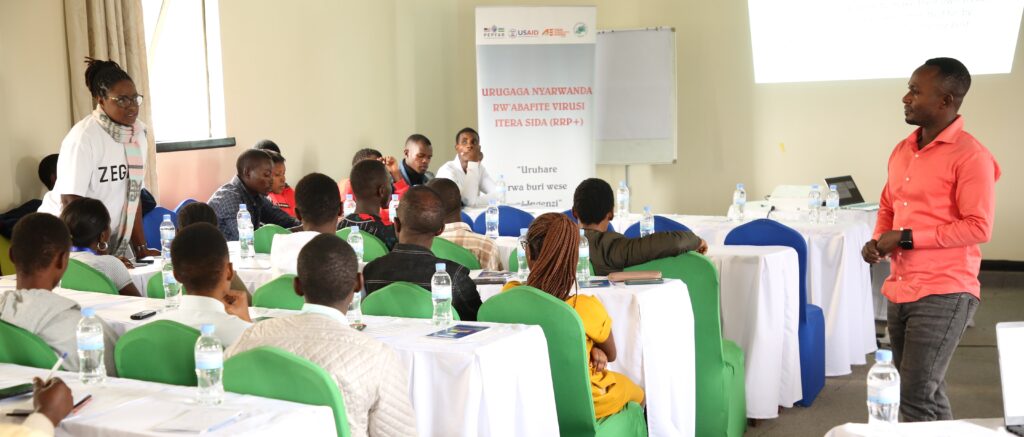In an effort to strengthen the fight against HIV, a group of 40 dynamic youth peer leaders concluded a transformative training on Adolescent-Friendly Service Model in HIV Response. This initiative, aimed at enhancing HIV prevention, care and treatment services for adolescents, taking the lead in advocacy, peer support, and awareness in their communities.

The training, which took place in Musanze district was organized by the Rwanda Network of People Living with HIV/RRP+, in collaboration with the Ministry of Health and the University Teaching Hospital of Butare (CHUB). It brought together youth peer leads from The U.S. President’s Emergency Plan for AIDS Relief) (PEPFAR) supported sites around different parts of the country.

These young people, already working in the HIV response sector, play a crucial role in bridging the gap between healthcare providers and adolescents in need of HIV services. As peer leaders, they were trained to pass on skills to their peers on adolescent friendly service model; supporting them (peers) access HIV services at Health facilities.
Some of the trained peer leads expressed how it is evident that most adolescents shy away from services related HIV. They pledged creating a safe space where adolescents feel comfortable asking questions and getting the support they need.

“The training has given me the tools to guide my peers through this process, and I’m committed to making sure they know they’re not alone. I believe it is important for young people to feel heard and supported. I’m ready to share what I’ve learned, so that many adolescents access the care they need for healthier lives.”, said Constance Mukaminani, Peer Educator at Kabgayi health center.

Training youth peer leads can help their peers understand the benefits of accessing health services, adhering to treatment, or using prevention methods like Pre-exposure prophylaxis (PrEP), thus becoming essential in increasing health-seeking behavior among adolescents.

Fidele Ntivuguruzwa said, “This is a great opportunity and it is amazing how much I learned! To me, the new adolescent model is about understanding and supporting each other in a better way. I am more confident that i shall help my peers make healthier choices and live beyond HIV. We’re stronger when we lift each other up.”

The Executive Secretary of the Rwanda Network of People Living with HIV/RRP+, Deo Mutambuka urged youth peer leads to contribute to accelerating achievement of zero new HIV infections, starting with their peers.
“As youth peer leaders, act as heartbeat of change in your communities. The new adolescent model is meant to equip you with the tools to not only educate but to inspire them. You have the capacity to shape a future where every young person can live confidently and healthier, knowing they are not alone in their HIV journey and the fight against the pandemic.”
Training on the new adolescent model in HIV response marks a pivotal step toward empowering youth leaders. Equipped with fresh knowledge, skills, and a deeper understanding of the unique challenges faced by their peers, these young people are expected to lead in the fight against HIV.
Their voices, compassion, and commitment will play a critical role in transforming lives, breaking stigma, and ensuring that every young person has the support they need to prosper.



